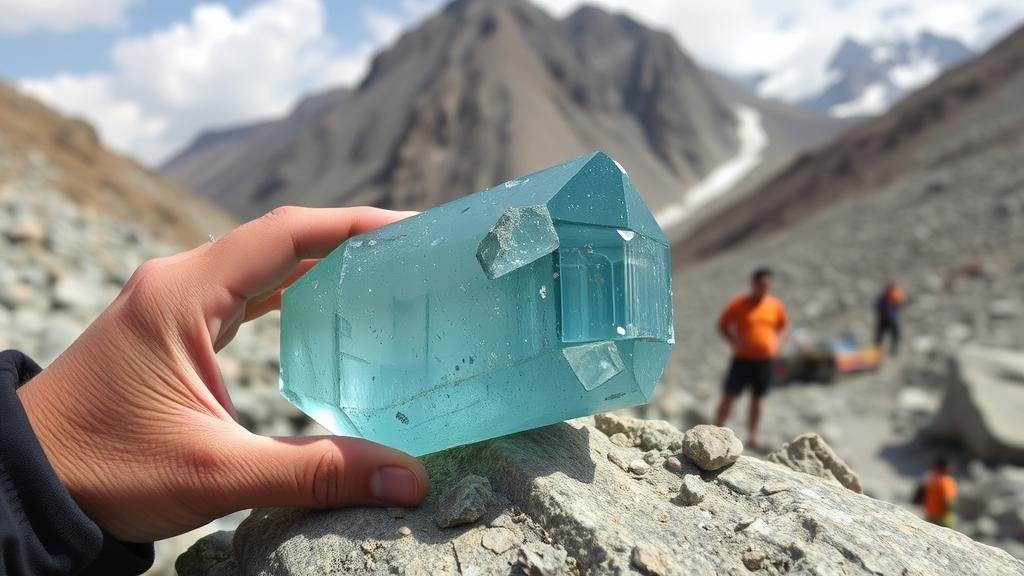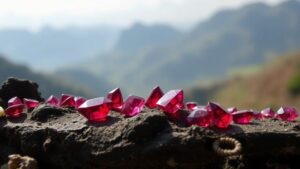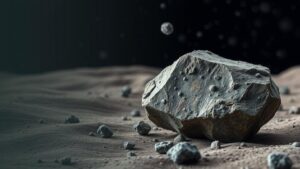Searching for aquamarine in the high-altitude mines of Pakistan’s Karakoram Range.
Searching for Aquamarine in the High-Altitude Mines of Pakistan’s Karakoram Range
For rockhounds and mineral collectors seeking adventure, few destinations offer the thrill of exploring high-altitude mines in search of stunning aquamarine gemstones like those found in Pakistan’s Karakoram Range. This majestic mountain range, part of the greater Himalayas, not only presents breathtaking landscapes but also hosts some of the most sought-after mineral deposits on Earth.
The Allure of Aquamarine
Aquamarine is a member of the beryl family, prized for its captivating blue to bluish-green hues. The name derives from Latin, meaning sea water, a fitting description for its tranquil color. It is composed of beryllium aluminum silicate (Be₃Al₂(SiO₃)₆) and typically forms in pegmatitic environments. Collectors are particularly drawn to high-quality specimens, which can sport colors ranging from pale pastels to deep, vibrant aquamarine shades.
Geological Context
The Karakoram Range, situated in northern Pakistan, is the backbone of the regions geological composition. The area is characterized by complex tectonics due to the collision of the Indian and Eurasian plates, which has produced numerous mineral-rich deposits, including aquamarine. mines are often located at elevations between 4,000 and 6,000 meters (13,123 to 19,685 feet), presenting both a challenge and a reward for collectors.
In the Karakoram, aquamarine can typically be found in quartz veins within granite and schist formations, often in association with other minerals such as muscovite, tourmaline, and often as inclusions of iron, which affects the gem color. The most well-known mining locality for aquamarine in this range is Skardu, where miners extract these precious stones with remarkable clarity and color saturation.
Mining Techniques and Challenges
Mining in the Karakoram Range is a labor-intensive process. Most aquamarine is extracted using traditional methods, relying on manual labor to engage with the rugged terrain. This includes methods such as:
- Hand tools like chisels and hammers for delicate extraction from rocky formations.
- Selective mining techniques that prioritize environmental conservation.
But, collectors and miners face numerous challenges, including harsh weather conditions, elevation sickness, and the logistical difficulties of transporting equipment and stones from remote locations. It is not unusual for temperatures to dip below freezing at night, even in summer months, which complicates mining operations.
Finding Quality Aquamarine
For rockhounds determined to find high-quality aquamarine, several strategies may increase success rates during mining excursions:
- Focus on fissures and veins near granite intrusions where aquamarine may crystallize.
- Pay attention to the color and clarity of specimens–darker and more vivid colors often indicate higher quality.
- Join mining tours led by local experts who know the top locations and can provide insight into the best practices for extraction.
Also, collectors should familiarize themselves with the guidelines for gemstone sourcing and adhere to responsible mining practices to help preserve the integrity of the environment.
Real-World Applications and Markets
The value of aquamarine has seen a steady increase, with well-cut and polished stones fetching premium prices on the market. According to the Gemological Institute of America, fine aquamarine can sell for over $1,000 per carat, depending on color and clarity. Its clarity and rich color make it a favorite among jewelers and designers worldwide, with applications in high-end jewelry and decorative arts.
Conclusion and Actionable Takeaways
For those passionate about geology and the thrill of mineral collecting, the quest for aquamarine in Pakistan’s Karakoram Range offers an exhilarating experience. It combines the beauty of nature with the joy of discovery. To prepare for a successful expedition:
- Research the best times of year to visit, typically during spring or summer when conditions are manageable.
- Consider the environmental impact of your activities and ensure compliance with local regulations.
- Network within the gemology community to learn from experienced collectors and miners.
Ultimately, the pursuit of aquamarine not only enriches ones collection but also fosters a deeper appreciation for the Earths natural wonders. Happy hunting!



